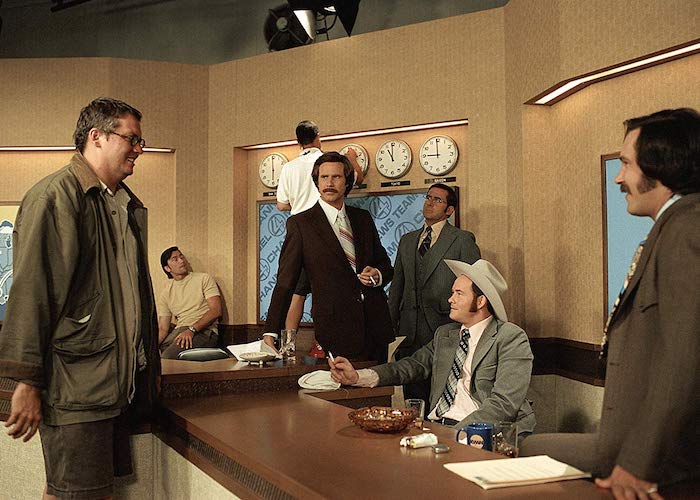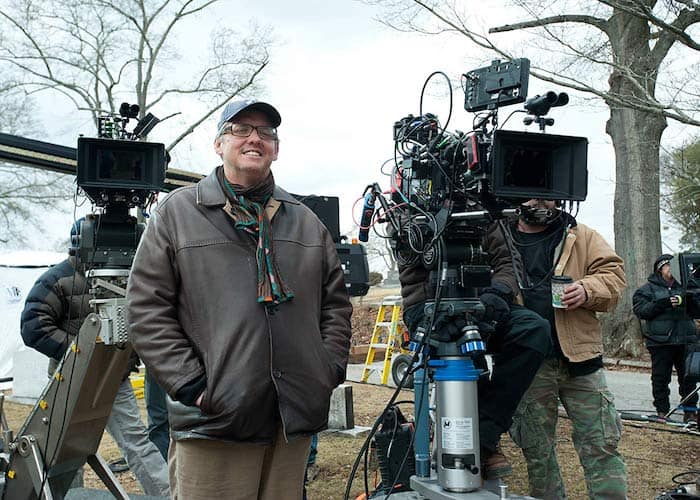In the late 1990s, Adam McKay made a name for himself as a writer for Saturday Night Live and got a start behind the camera directing shorts for the show. After leaving SNL, McKay teamed up with good friend Will Ferrell and made some of the most successful comedies of the 2000s, including Anchorman: The Legend of Ron Burgundy and Step Brothers. The duo also launched the comedy video website Funny or Die in 2007.
By 2015, McKay made significant steps towards branching out in terms of genre, co-writing the screenplay for Ant-Man and bringing Michael Lewis’s bestselling breakdown of the United States housing bubble to the big screen in The Big Short. In 2018, he returned again to politically charged recent history with the Dick Cheney biopic Vice. McKay has tackled everything from superheroes to the financial crisis, and he’s learned a whole lot about filmmaking along the way. Here are six of his best tips:
Take a Two-Gear Approach
In 2015, McKay received a nomination for Outstanding Directorial Achievement in Feature Film at the Directors Guild of America Awards for The Big Short. As such, he and fellow nominees Alejandro G. Iñárritu, Tom McCarthy, George Miller, and Ridley Scott had a lengthy roundtable discussion as part of the annual DGA Meet the Nominees Symposium in February 2016. In the discussion, McKay addressed The Big Short‘s notably innovative and daring editing, elaborating on a “two-gear” approach that also serves as excellent advice for other filmmakers:
“Half of directing is hiring really great people, and we got Hank Corwin, who’s an amazing editor. So early on, when I met with him, I told him—I said, ‘Go to town […] just try what you want to try.’ And he was like, ‘Really? I’m not going to get fired?’ And I was like, ‘No, no, go for it.’ So I would come in every week and look at some rough-cut scenes he had and they were really exciting. And some of them I knew went too far, but I didn’t say anything at that point. So I started the first half of our editing process almost like a hippie teacher from the 1970s who refused to give out grades, and everyone’s cool, and then what happens is we start to get the movie, the movie starts to come into shape, and then I become like Otto Preminger. […] I’m counting frames. […] So it was really two gears. The one gear was like, exploration, we brought our composer in really early […] everything was open, we tried everything; and then the second gear is ‘Now let’s make a movie.'”
You can watch the full roundtable discussion below; the featured quote starts at 2:28:07:
Don’t Waste a Single Frame
McKay also discussed editing with Den of Geek in January 2016, elaborating on his “counting frames” attitude towards editing and why it’s worth your while to be picky down to the milliseconds:
“Every single hundredth of a second is gold. Every choice you make within those two hours should have thought behind it. […] My editor sometimes laughs at me when I do the three, four frame thing. And he said to me at the end, ‘I don’t think I’ve ever done a movie that’s this tight!’ Every fucking moment, we’re going to attack. We’re not going to waste time, we don’t want energy lacking. There has to be information, some character, something visual, something always has to be alive.”

Adam McKay directs a scene for ‘Anchorman’ (DreamWorks LLC)
Use the Fairytale Test
In an interview with the Adobe-run website 99U in December 2015, McKay described a technique he uses to help tell if a story idea is worth turning into a movie: condensing it into a fairytale (adapting plot points to castles and princesses as necessary) and telling it to his youngest daughter as a bedtime story. Even if you do not have a small child to entertain, the filmmaker makes a compelling case for trying out this technique at home:
“I do it to see where the holes are, where the momentum is and to see if pieces don’t flow in a story. I think of it as zooming in on a map on a computer. I’m zooming into the story in its most raw form and making sure the weight-bearing beams, the six or seven storytelling points, are there. Because sometimes you can jump into an outline and later realize that you’re missing an entire piece of the story. If I can tell it as a five-minute story to a child, I at least have my basic building blocks.”

McKay with Sam Rockwell and Christian Bale on the set of ‘Vice.’ (Credit: Matt Kennedy / Annapurna Pictures)
A Day of Shooting is all About Your First Shot
In March 2015, McKay was the featured guest on ‘Slate’s “Working” podcast, in which individuals from a variety of fields break down their day-to-day routines. The filmmaker discussed the three different hats he wears — writer, producer, and director — and the different working styles he adapts accordingly. When it comes to directing and being on set, he gave the following advice (beginning at 23:29):
“A day of shooting is all about the first shot. Because once you get that, you’ve got your momentum. […] And then you’ve got momentum. Then you’re going, ‘Okay, we need to get the other side of that coverage’ — now the lighting setups are getting less because you’ve kind of done your master lighting setup for this location and now you start to move a little bit and, you know, you’re just shooting and shooting and thinking and giving notes […] lighting, setup, shoot, is kind of the pattern of the day.”

McKay on the set of ‘Anchorman 2’ (Paramount Pictures)
Changing Tone is Key
McKay participated in the filmmaking video interview series DP/30 back in December 2015, and shared the following great advice about crafting a dynamic story in a world where genre boundaries are quickly disintegrating:
“I talk about movies in terms of energy, and not in a sort of crystal, New Age way, but just, as far as, ‘What is it doing to me as an audience member?’ Whether I’m laughing or not, to me it’s all about the rhythms of energy and changing tones. And there’s a time to really push and there’s a time where […] you know, you don’t want to be pushed the entire time. You want things to be funny sometimes, joyful sometimes, jeopardy sometimes. That change in tone, as we’re seeing genres break down more and more — I don’t think the genres really hold any more — those changes in tone become key to screenwriting and directing.”
You can watch the full interview below:
Test Screenings are Hell (But Worth It)
In a January 2019 interview with journalist and filmmaker Adam Curtis for The Guardian, the two directors discuss the ordeal of test screenings. Although McKay uses many rounds of test screenings as part of his editing process, he admitted that early test screenings especially can be a rough time. Nonetheless, he makes the case that the pain is worth it in the end:
“You’re naked. You’re really naked. It’s like you’re going out to dinner and, before your date has arrived, you’ve opened up the door of the bathroom, and you’re completely naked and still combing your hair. That’s really what you’re doing, and it’s almost always disastrous, but I find the pain very helpful. I can take the punch in the mouth. It just keeps us honest.”
What We Learned
Generally speaking, people like to put things into boxes. Into particular roles — director, editor, writer, cinematographer, the list goes on — or categories: drama, comedy, romance, science-fiction, and so forth. Admittedly, all of these labels indicate different things, possess different definitions and connotations. However, as McKay notes, genre conventions are so established at this point that they’re getting a little old. As demonstrated by his dynamic and evolving career as a filmmaker, creatively crossing borders and blurring boundaries is more important than ever in making inventive, engaging films.
The post 6 Filmmaking Tips from Adam McKay appeared first on Film School Rejects.

0 comments:
Post a Comment